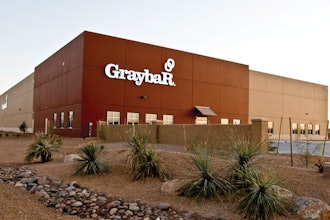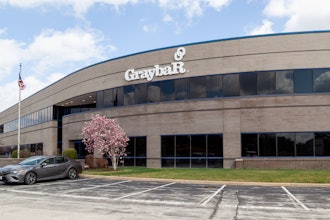
Even before the pandemic, many industrial B2B sales forces have been evolving their sales models and processes to address shifting buyer preferences, improve productivity, embrace specialization and anticipate changing buyer and seller demographics.
Many companies explored new sales-coverage models (hybrid inside/outside teams), and differentiated or separated customer service (inbound-call order taking) from outbound-calling inside sellers. Some launched business development representatives (BDRs) to specialize in new-logo acquisition. Many of these changes have improved customer experience, cost-to-serve, productivity and organic growth.
At the same time, distributors have shopped for new sales technologies to support their sellers, manage their teams and gain better visibility into sales performance.
Sales Transformation: Starting with Your Buyer
Struggles at sales transformation (including the transition to virtual sales) actually have a very clear root cause, of which poor technology adoption is merely a symptom. The root cause, in simple terms, is putting the cart before the horse. Start the sales transformation journey by taking a deep look at the buyer (and potentially the ideal customer) profile:
- Who are the key buyer personas and committee clusters (by vertical)?
- What problems are they trying to solve?
- What are their buying processes?
- What resources or insights do they seek to advance the buying process?
- How and when do they prefer to engage sellers?
If the seller’s job is to help buyers buy more, then our efforts to design a sales process need to align tightly with buyers’ buying processes, stages and exit criteria.
The Role of Virtual Selling
As we dig into what it takes to better reach, connect with, and serve today’s buyers, we must also consider the role that virtual selling plays. Many sellers think virtual selling only entails showing up on Zoom and doing the same things they used to do face-to-face (except now they’re in their bedrooms with the dog barking). There is, in fact, more to virtual selling than that.
If we start with a dual-sided view of a typical buying process, and then overlay next to it the seller’s engagement/activities, the emerging gaps in seller support of buying become obvious. There are two resulting sides of the buying process. The synchronous (in person) “frontstage” comprises the activities where buyers and sellers spend time together — where many sellers focus all their efforts. The asynchronous (outside meetings) “backstage” comprises all the other critical activities buyers pursue to inform, validate and frame their decisions — increasingly online and/or independently of seller meetings.
For sellers who focus on only their “frontstage” actual meetings with prospects and customers, they are choosing to be absent from key “backstage” buying stages and activities — which is where DIY, no-decision or competitors’ virtual sellers jump in and take the opportunity off the table. Consider the following view of the buying process and seller gaps, as well as the opportunity to support the buying process in the spaces in between meetings (Figure 1).
What’s needed to create a superior and competitively differentiated buying experience — to convert more opportunities and gain market share — is a new model that reimagines and integrates “frontstage” engagement while augmenting new “backstage” engagement.

Now, the whole buying process can become an opportunity to support the buyer. Strong digital content is required across many platforms (website, buyer forums, SEO, e-commerce) to lead to the first seller engagement, but that is not the end of the story.
Begin with the Buyer’s Needs in Mind
You can see the importance of helping buyers move through the buying process with the use of virtual technology, but this buyer-centric mindset must also apply as you plan all initiatives to improve sales. The buyer needs to be the North Star for all our efforts to innovate in sales processes, talent selection and development, sales management operating system, and last but not least, sales technology (including virtual sales mastery).
That is to say, all the downstream innovation and transformation is disoriented without the buyer-centric foundation. Which is why virtually all the hasty sales transformations mentioned — from training to sales management to sales tech adoption — risk failing to deliver the expected results. The sales force’s daily behaviors won’t change until the buyer-first systems approach to selling takes center stage.

In the context of buyer-centric sales transformation framework, it becomes obvious why so many sales transformations fail to achieve the desired outcomes: they are all putting the downstream investment “carts” before the upstream buyer “horse.” Once we reframe the sales transformation journey, the disconnect quickly resolves. Starting with solid buyer research — and leading into documented buying process stages, resources and exit criteria — we can identify clusters of buyers and buying processes, which support a selling process.
Align and Formalize Your Sales Process Based on the Buying Process
When the sales process(es) have been formalized to support buyers’ process(es), we can delve deeper into the downstream talent selection, training and coaching transformations. We can identify the intrinsic sales talent (“seller DNA”) as well as the extrinsic (learned) sales competencies required to successfully execute the specified sales process. We sharpen the “fit” between sellers and roles, building high levels of sales readiness to support the sales process.
With the right people in the right seats on the bus, we can then focus on the supporting sales management operating system: the prescribed manager activities, competencies, coaching, KPIs, etc. We want to ensure that our sellers master the execution of the buyer-centric sales process (“frontstage” and “backstage”) that they have been trained to execute. Lacking a formalized sales management operating system, the old “Wild-West” sales behaviors remain, and the intended gains in buyer experience, share of wallet/market share and seller development go unrealized.
Bridge the Gaps Between Sellers and Buyers
Companies that rigorously research their buyers, align and formalize their sales process, and master the supporting sales management operating system, are in the best position to achieve their sales goals. They have the ability to implement sales tools and technology that increase customer value, accelerate seller performance and drive business outcomes and ROI. In this buyer-centric, systems approach to transformation, all the linkages between buyers and sellers are resolved and synchronized — by design. Sellers understand their buyers and they know how to serve them on a daily basis. Managers have clear systems, playbooks and KPIs to apply a continuous-improvement model to accelerate rep performance. And virtual selling and sales technology are intrinsic to how everyone executes the system.
Reorient Your Sales Transformation
The modern, buyer-centric sales transformation requires greater maturity, focus and seriousness. It requires a new buyer-centric perspective, systems thinking and focused time and work. The outcome, however, is a predictable revenue machine that makes it better to be your customer, better to be your seller, better to be your shareholder, and harder to be your competitor.
David Bauders is the founder and CEO of SPARXiQ.























